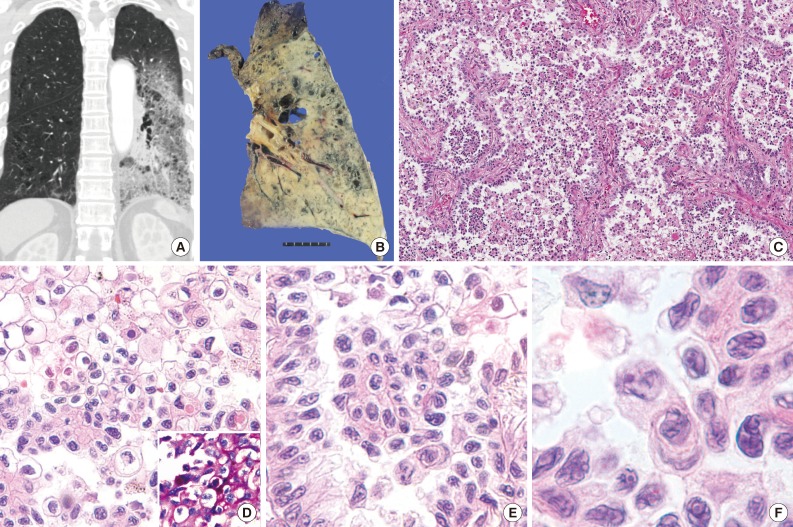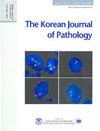Micropapillary mucinous adenocarcinoma of the lung: a brief case report.
Korean Journal of Pathology
Pub Date : 2013-12-01
Epub Date: 2013-12-24
DOI:10.4132/KoreanJPathol.2013.47.6.603
引用次数: 2
Abstract
In 2011, the International Association for the Study of Lung Cancer/American Thoracic Society/European Respiratory Society (IASLC/ATS/ERS) classification added micropapillary predomi nant adenocarcinoma of the lung as a new histologic subtype and reclassified the former mucinous bronchioloalveolar carcino ma (BAC) as a variant of invasive mucinous adenocarcinoma. 1 Recent studies regarding epidermal growth factor receptor (EGFR) and K-ras mutations in lung cancer demonstrated that BAC with a lepidic or hobnail growth pattern is more typically associated with EGFR mutation, while mucinous differentiation is more common in cases with K-ras mutation. 2-4 However, these studies were based on the 2004 World Health Organization (WHO) classification, and there had been a few reports on the micropapillary pattern of this disease and its correlation with EGFR and K-ras mutations. 4,5 According to the report of the IASLC, 1 micropapillary predominant adenocarcinoma is known to be related to K-ras (33%), EGFR (20%), and BRAF (20%) mutations. Hypothesizing that micropapillary predominant adenocarcinoma with mucinous differentiation may be correlated with K-ras mutation, we performed a histological review of a case of micropapillary mucinous adenocarcinoma with associated K-ras mutation.

肺微乳头状粘液腺癌1例报告。
本文章由计算机程序翻译,如有差异,请以英文原文为准。
求助全文
约1分钟内获得全文
求助全文

 求助内容:
求助内容: 应助结果提醒方式:
应助结果提醒方式:


